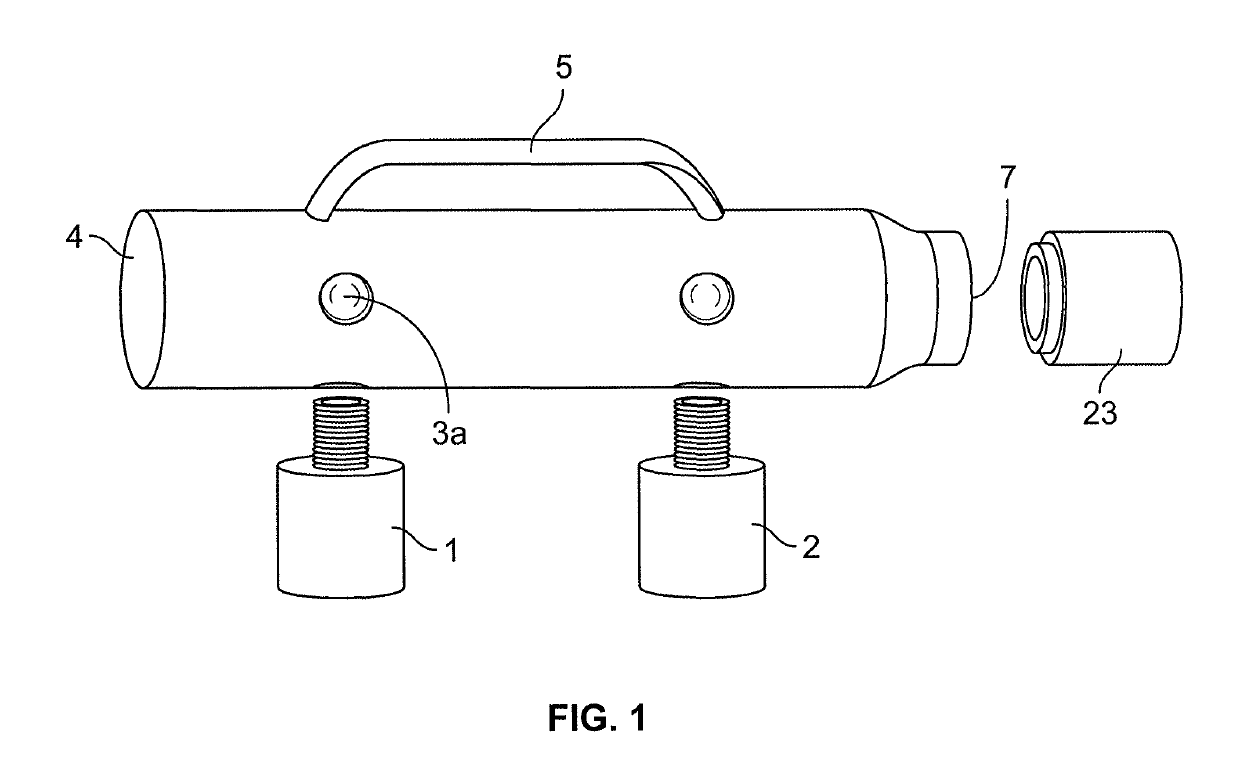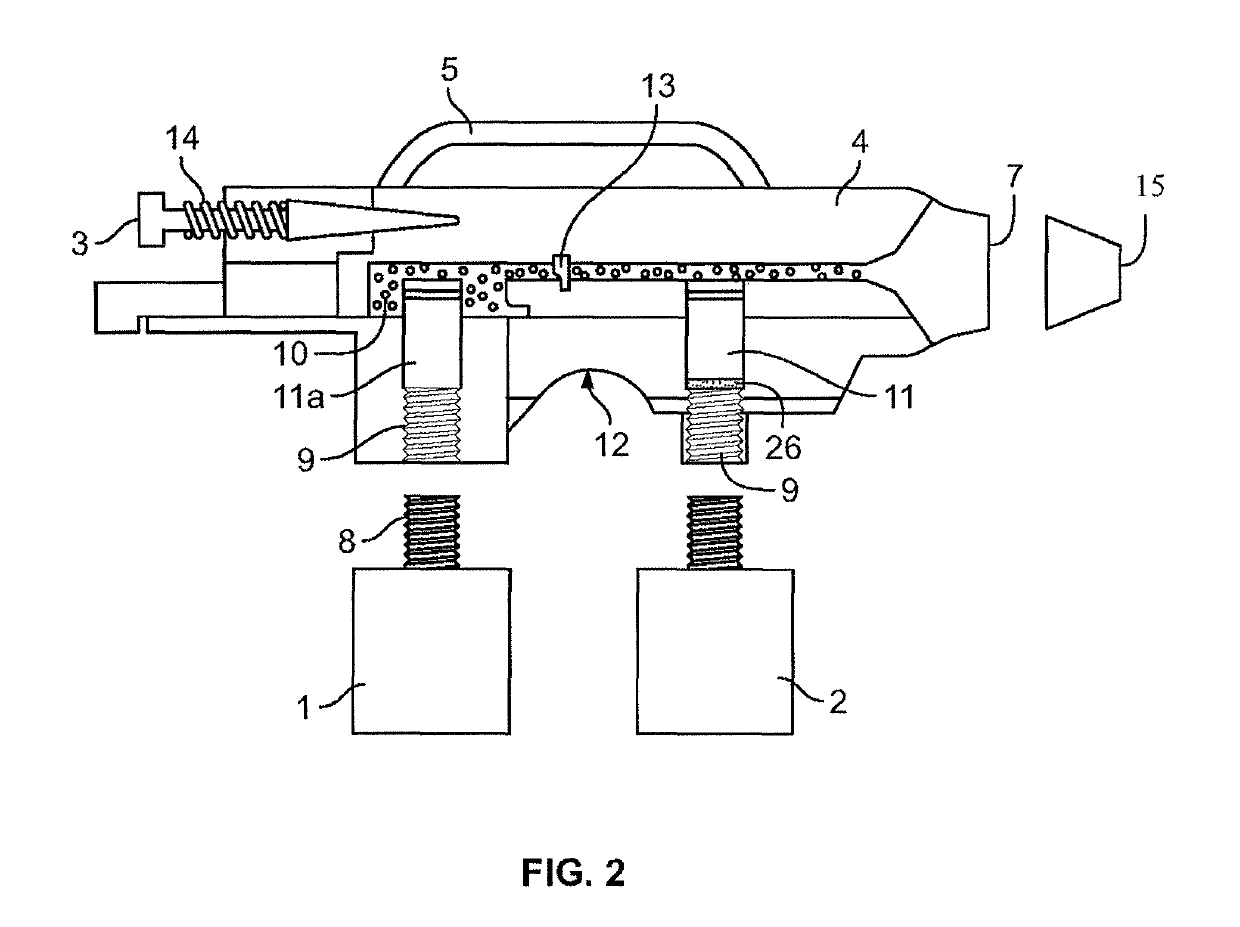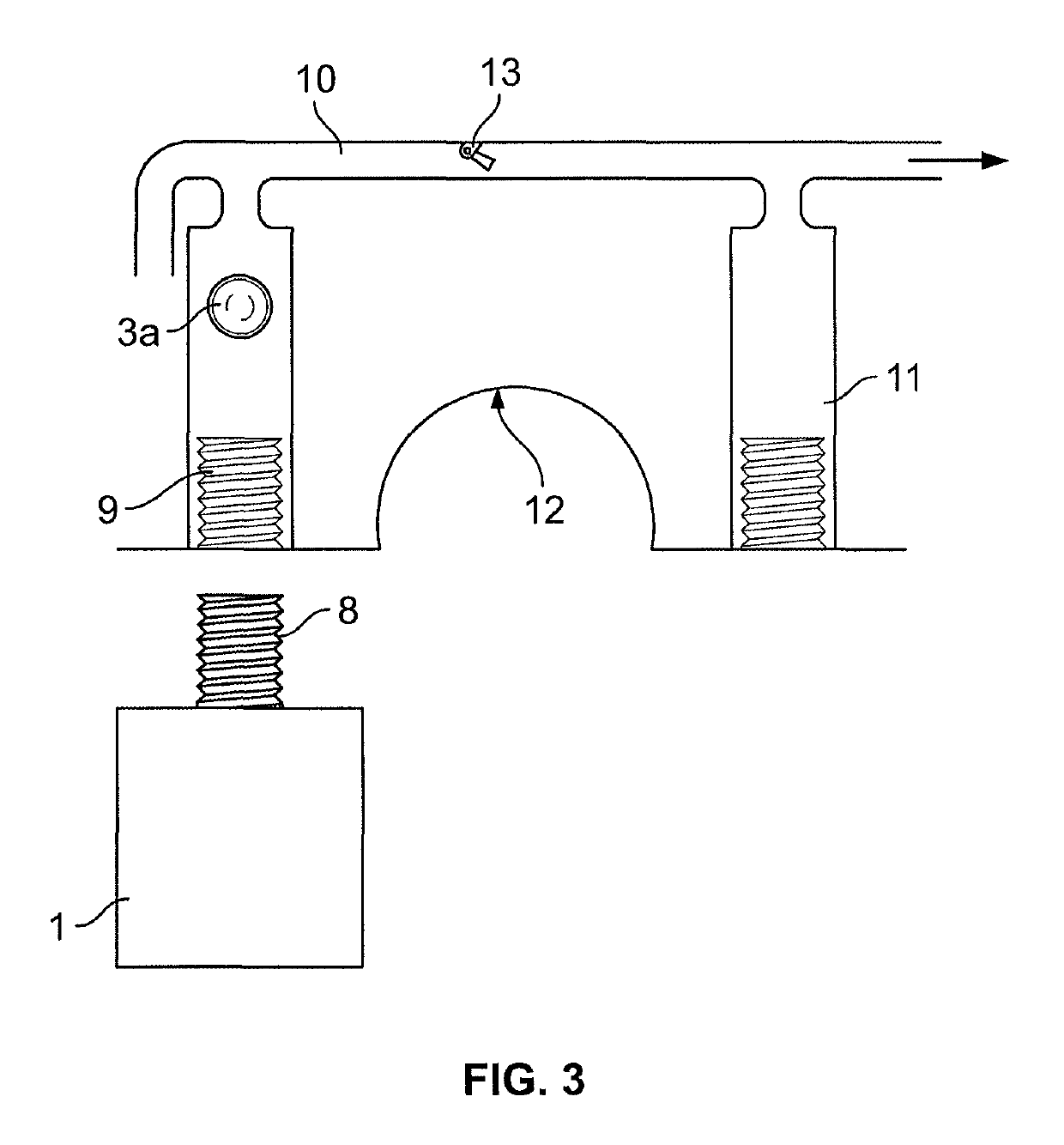Rescue inhaler
a technology of inhaler and inhaler, which is applied in the field of rescue inhalers, can solve the problems of reducing affecting the flow and pressure, and creating a poor length-tension relationship, so as to reduce the density of the gas mixture, and save space and cos
- Summary
- Abstract
- Description
- Claims
- Application Information
AI Technical Summary
Benefits of technology
Problems solved by technology
Method used
Image
Examples
example 1
s 28% (0.280×0.178)+% of O2 is 23% (0.230×1.43)+% of N2 is 30% (0.300×1.25)+19% air (0.19×1.29 g / l)
[0212]He=0.049+O2=0.3289+N2=0.375+Air=0.245=d avg.=0.9979 g / l
example 2
s 30% (0.300×0.178)+% of O2 is 25% (0.250×1.43)+% of N2 is 30% (0.300×1.25)+15% air (0.15×1.29)=d avg.[0213]He=0.053+0.3575+0.375+0.193=d avg.=0.9875 g / l
example 3
s 30% (0.30×0.178)+% of O2 is 40% (0.40×1.43)+% of N2 is 25% (0.25×1.25)+5% air (0.05×1.29)=d avg.[0214]He=0.0534+O2=0.572+N2=0.3125+Air=0.0645=d avg.=1.108 g / l
PUM
 Login to View More
Login to View More Abstract
Description
Claims
Application Information
 Login to View More
Login to View More - R&D
- Intellectual Property
- Life Sciences
- Materials
- Tech Scout
- Unparalleled Data Quality
- Higher Quality Content
- 60% Fewer Hallucinations
Browse by: Latest US Patents, China's latest patents, Technical Efficacy Thesaurus, Application Domain, Technology Topic, Popular Technical Reports.
© 2025 PatSnap. All rights reserved.Legal|Privacy policy|Modern Slavery Act Transparency Statement|Sitemap|About US| Contact US: help@patsnap.com



